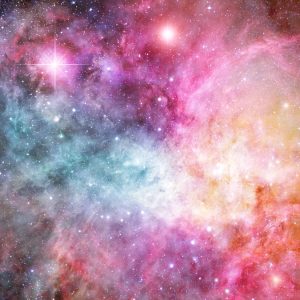Scientists in Canada have picked up a mysterious radio burst sent from a faraway unknown source. A CHIME telescope has collected the mysterious signal that is thought to originate from an alien civilization or a black hole. The low-frequency signal is the first wave to date that’s below 700 MHz. The radio burst has been denominated as FRB 180725A (FRB stands for Fast Radio Burst), but the source of the signal is yet to be discovered.

FRBs are rare, the first being discovered back in 2007, and only two dozens of them have ever been recorded over the past eleven years. They are a kind of radio emission that may appear haphazardly or temporarily, making it tough for scientists to find and study them properly. The source or cause of an FRB is not known, and many experts have speculated that it might be due to a collision among the stars, a message that has been created artificially from outer space, or from an unknown extra-terrestrial civilization.

As per sources, the CHIME (Canadian Hydrogen Intensity Mapping experiment) telescope was the first to detect the radio signal. It has been operating for under a year. The telescope, in its entirety, comprises four U-shaped cylinders that are 100 meters long, enabling it to catch and detect certain signals from the times when this universe was around 6 to 11 billion years of age. The telescope is adept in collecting radio emissions or waves whose wavelengths vary from 37 to 75 centimeters. Maximum of these radio signals originate from the Milky way, but experts say that some may have begun their travel billions of years before. The CHIME telescope can collect a huge quantity of data which can be more or less equivalent to every mobile network’s data across the world.

Scientists are of the opinion that such a discovery can open doors to a concrete understanding and an in-depth analysis of the reasons that cause FRBs. A professor of astrophysics has indicated towards a number of reasons for an FRB occurrence and that include exotic pulsars, neutron stars, massive black holes in faraway galaxies, supernova, magnetars, or exploding stars. The frequency of this particular radio emission has been recorded at an all-time low of 580 MHz. The Fast Radio Bursts are amazingly bright, owing to their short duration and having originated from distant places, and there is no possible source that has been identified as their origin. Scientists have not yet been able to find out what exactly has produced such a sharp and short radio burst. It has been revealed that some additional FRBs have been detected after this, and some have been emitted at much lower frequencies like 400 MHz.

These events have taken place during both day and night, and their time of arrival or detection is not related to the known origins of earthly radio frequency interface (RFI). Experts are expecting to have a clear understanding of what actually propels this kind of expansion at such a high speed. The CHIME telescope is playing a major role as a time machine in diving deeper into mysteries of this universe and its history. In addition to the FRBs, the telescope can even help in detecting gravitational waves and tackling the perplexing spheres of astrophysics in recent times. CHIME is capable of providing a mammoth bank of data that will catapult Canada to the forefront of this amazing discovery and research. All radio waves, having wavelengths ranging from 37 to 75 centimeters, can be easily collected through CHIME, and in the process, scientists will get hold of all the weak signals that are emitted from the universe.
Much more is awaited as scientists have taken up the cudgels to study this entire episode extensively. Many of them are citing other physical processes that they are not able to fathom yet, but the truth remains that signals like this are rare to come by. Undoubtedly, this research will automatically lead them to understand this universe better. Although an extra-terrestrial civilization has been speculated as being the source, there are many aspects that need to be considered before coming to a conclusion. It will be interesting to track down the progress, and this detection might as well unearth a few more intriguing secrets of this universe.





